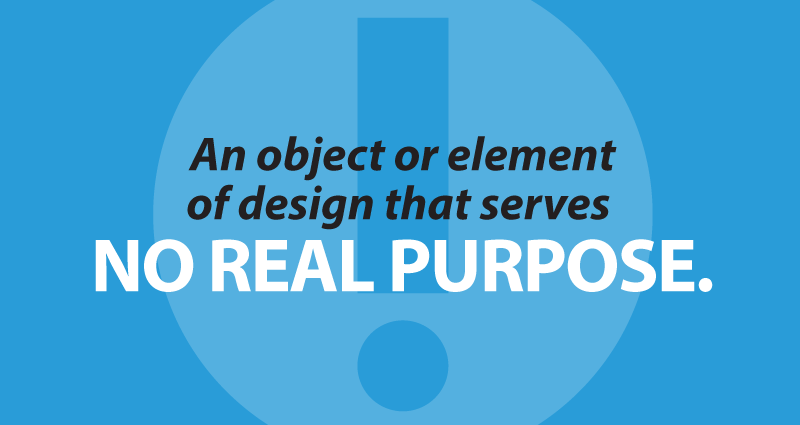
Are blasts from the past holding you back?
 As a Wordsmith (that’s the official title I put on my business cards, anyway), I’m a big fan of new words. I recently ran across a doozy: skeuomorph, an object or element of design that serves no real purpose, but only echoes some past object.
As a Wordsmith (that’s the official title I put on my business cards, anyway), I’m a big fan of new words. I recently ran across a doozy: skeuomorph, an object or element of design that serves no real purpose, but only echoes some past object.
For example, many calendar applications on modern-day computers and mobile devices mimic paper calendars. This is useful because it’s instantly understandable to most people.
A less useful example would be an online catalog or magazine that tries to mimic the print “experience” with a nonstandard interface complete with gratuitous paper shuffling noises and page flipping effects. It would be faster and far more useful to present the same information as a series of linked, searchable web pages.
There are lots of skeuomorphs at any credit union, some not-so-useful.
For example, the interface for most home banking web sites looks a lot like a paper ledger — useful because it’s familiar, but a bit limited (why can’t you drag and drop money, create new subaccounts on the fly, or customize your balance views and account summaries?).
If you visit any credit union branch, you’ll see skeuomorphs left over from the days of silent marble lobbies, paper passbooks, long lines, and caged tellers. Some remnants are still useful for security and privacy (cages became tall teller counters and cameras), and some (anything on paper, signatures) have outlived all logical relevance.
Marketers also need to leave behind outdated media skeuomorphs.
Think about how many of your own web design preferences are left over from print design. Or, if you’re already web-savvy, think of the massive ongoing interface shift between using a large screen, mouse, and keyboard vs. twiddling a tiny handheld screen with your fingers. How many marketers have mistaken social media for a one-way mass media channel (and still are)?
- CU Numbers Need Marketing Love, Too - April 2, 2024
- Will it blend? The only CU fintech question that matters. - February 13, 2024
- Solving the CU marketing “now what?” problem - January 16, 2024
